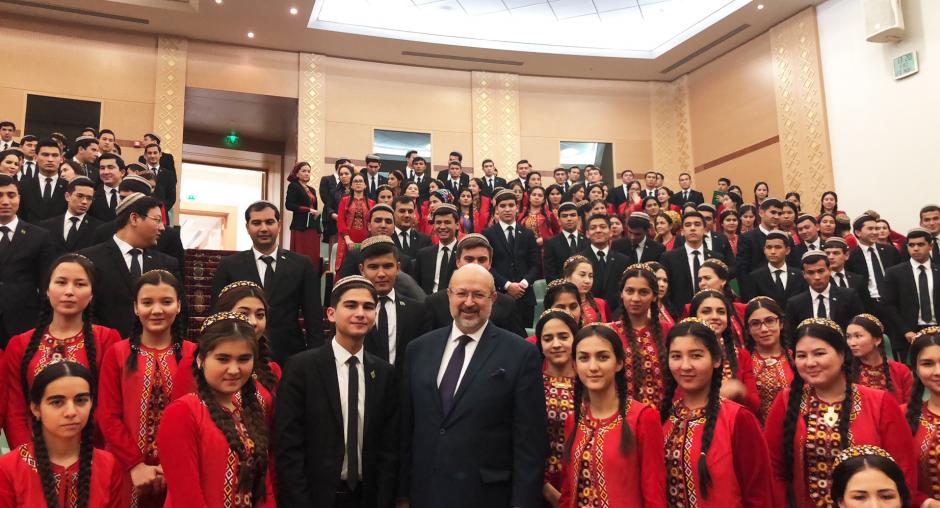OSCE High Commissioner on National Minorities and Turkmenistan’s authorities agree to strengthen co-operation on education and integration of society

The OSCE High Commissioner on National Minorities (HCNM), Lamberto Zannier, during his visit to Ashgabat and the Dashoguz Region from 20 to 23 November 2018, agreed with the authorities of Turkmenistan to strengthen their co-operation on matters of education and integration of society. Over the course of the visit, Zannier met the country’s leadership, including President Gurbanguly Berdimuhamedov, Deputy Prime Minister and Foreign Minister Rashid Meredov and Speaker of the Mejlis (parliament) Gulshat Mammedova.
“There is a positive dynamic towards intensifying regional co-operation among the Central Asian states. During my visits to the region this year, I saw that this can also prove beneficial for national minorities,” said Zannier. “For example, I am glad that Turkmenistan is interested in playing a more prominent role in the HCNM Central Asia Education Programme, which brings together educational officials from the region to share experiences on multilingual education.”
The HCNM and the OSCE Centre in Ashgabat co-hosted a seminar to familiarize the authorities of Turkmenistan with the HCNM’s Ljubljana Guidelines on Integration of Diverse Societies. “Turkmenistan has explicitly included measures to protect and promote minority languages and cultures in its National Human Rights Action Plan,” said Ambassador Natalya Drozd, the Head of the OSCE Centre in Ashgabat. “By drawing on the thematic work of the HCNM, the OSCE supports the authorities with its implementation.”
In the country’s north-eastern region of Dashoguz, which borders Uzbekistan, Zannier met with the regional authorities and visited two schools specialized in the teaching of foreign languages. He noted that more investment could be made in mother tongue-based multilingual education and the promotion of cultural heritage of all communities of Turkmenistan: “Successful integration requires both respect for minority identities and the removal of obstacles to the full participation of minorities. Education is the key to achieving this balance.”
